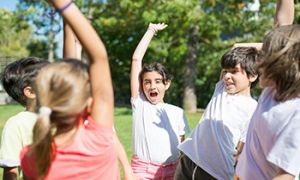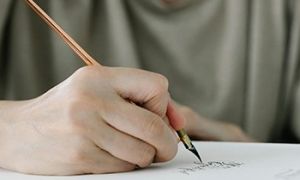Developed in northern Italy after the Second World War, the Reggio Emilia is a child-centred approach to early childhood education. It puts a child’s sense of self-worth and agency at the heart of its pedagogical ideas and its practices are aimed at nurturing children’s multiple capabilities. The following article provides information About Reggio Emilia, The Reggio Emilia Environment, The Reggio Curriculum, Role Of The Educator, Principles and Practices and more.
About
Based on the beliefs and practices of Italian educator and psychologist Loris Malaguzzi, the approach is actually named after a north Italian municipality that includes the villages of Reggiolo, Sologno, and Guastalla. After the devastation of the Second World War, families and civic authorities in the municipality came together to raise their children in a child-led, play-based environment rather than depending on expensive materials and equipment.
Witnessing first-hand such community-centred educational practices and later exploring international directions in educational psychology and pedagogy, Malaguzzi began to develop the theory that it was more important for children to be educated holistically rather than focus on academic achievements like literacy and numeracy.
While working with children with learning difficulties, he began experimenting with pedagogical practices, paying particular attention towards the areas of motor skills and children’s multiple languages of expression. Over time, Reggio Emilia became the theatre of rich debate on education and childhood, with expanding avenues for formative and professional growth.
The Reggio Emilia Environment
Reggio Emilio's approach places such great importance on the role of the environment in shaping children’s learning that it is described as the child’s ‘third teacher’. Inspired by Nature, the learning environment in this approach should be aesthetic, accessible and inclusive. It should inspire curiosity and engage children through play and exploration.
Display of children’s work is another aspect of the Reggio Emilia environment which should be done in a way as to make children’s learning and experiences visible besides inviting collaboration with educators and parents.
Additionally, it should offer children the physical and psychological space to express different ways of learning or their ‘Hundred Languages’ besides letting them practice social and emotional skills.
How Educators Can Create A Reggio Emilia-Inspired Environment
-
Designing the centre that is naturally ventilated and lets in ample sunlight.
-
Facilitating a varied sensory diet for children; ensure children have access to natural materials and objects like pebbles, leaves, sand, twigs, water, clay, flowers, shells, stones, fabric, baskets, and art prints for children to see, touch, and smell and even hear them make sounds as they are knocked or rolled about.
-
Using natural materials for open-ended play; for example, a pine cone can be used as a prop for dramatic play or an item for construction. This is especially important when supporting a wide range of ages, abilities and learning styles.
-
Equipping classrooms with resources, materials and tools for open-ended, creative and multiple-use activities; for example, children can be provided with a mix of commonly found objects like loose parts like boxes, blocks, beads, sticks, ribbons, stones and rings. Such objects offer children infinite possibilities for play as they line up, scatter, carry, knock about, take apart, put together and redesign these parts.
-
Including displays of children’s work that are uncluttered and involving children in making decisions about whose work is displayed and how these are changed.
-
Captioning children’s work displays or photos with discussions between adults and children. Use calmer, natural colours indoors that are more soothing to children and use light-coloured fabrics for table and wall coverings or as hanging dividers in the room.
-
Featuring several mirrors, doors, windows or courtyards to create a sense of space and assurance interconnected common areas like an open piazza or central common area is often attached to an open plan kitchen, while student artwork is showcased in galleries throughout the school.
-
Creating a nurturing, home-like environment with little touches like framed pictures, a vase of flowers, or a well-worn comfy rug
-
Catering to multiple ways of learning; thus apart from a maths table and reading nook, ensure that your classroom has space for a crafts table, a music corner, a set up for carrying out experiments, and walls to put up their artworks.
-
Arranging furniture and seating in ways to support physical movement and social interaction so that children can practice skills like collaboration and negotiation.
-
Facilitating emotional regulation with the use of sensory bins, calming spaces and time-out corners.
-
Fostering agency in children with strategies like flexible seating options that allow children to decide whether they want to work alone or with each other; similarly, the use of furniture like chairs that allow feet to touch the floor or child-height sinks and shelves all encourage children to exercise agency.
-
Making both indoor and outdoor spaces welcoming to children with different backgrounds, communities and abilities through wall displays, materials, equipment and resources like books that reflect the communities of the children and honour Aboriginal and Torres Strait Islander history and culture.
-
Incorporating inclusive design and processes that make the environment accessible to children under three as well as those with additional needs.
-
Keeping equipment, furniture and material in good condition and in a state of repair; follows from the Reggio Emilia belief that “Care of the furniture, the objects, and the activity spaces is an educational act that generates psychological wellbeing, a sense of familiarity and belonging, aesthetic sense, and the pleasure of inhabiting.”
The Reggio Emilia Curriculum
The Regio Emilia curriculum is co-constructed with the child and their families. This is because it sees children born with immense potential and wide-ranging abilities who are capable of conveying to sensitive adults what and how they want to learn. According to this approach, every child, individually and in their relations with the group, is a constructor of experiences to which they are capable of attributing sense and meaning.
How Educators Can Design A Child-Centred Curriculum
- Observing children as they play and work together so that their interests, aptitudes, strengths and abilities can be identified.
- Building upon identified interests by asking what the children already know about that topic, or maybe asking the children what they are curious about.
- Talking to families to get a sense of what interests their children.
- Keeping in mind common topics like dinosaurs, puddles, and xylophones that attract young children even if they are not directly related to literacy or numeracy.
- Remaining abreast of popular kids’ shows or cartoon characters that can be incorporated into the curriculum.
- Planning activities that help children use their imagination; popular examples are dress-up games where children can act as royalty, or animals, or wear clothing from global cultures, such as a kimono, dashiki, or a kilt.
Role Of The Educator
The child-centred principle of Reggio Emilia's approach means that educators are seen more of facilitators of children’s learning experiences and explorations rather than instructors handing out worksheets and tasks to children. This is because the approach recognises children as experts in their own lives and experiences who require responsive adults to express this potential through guided experiences.
Equally importantly, the educator is a co-learner with the children which means that through reading, collaborating, and thinking alongside the children, they learn more about their pedagogy and practices.
How To Incorporate Principles Into Practice
- Listening, observing, documenting and reflecting on children’s words and actions; if needed, carry around a clipboard, and write down conversations
- Encouraging your learners to wonder and think.
- Developing children’s questions and questioning skills.
- Allowing time for learning conversations and reflection by children
- Write down what the children say in order to be inspired about what you do
Principles and Practice
100 different languages
Malaguzzi believed that children, with their infinite imaginations, have a vast number of ways to express themselves. Thus children don’t just use speech but a ‘Hundred Languages’, like art, physicality, experimentation, relationships and many other avenues as forms of communication and expression.
In this sense, the ‘Hundred Languages’ become a metaphor for the extraordinary potentials of children, their knowledge-building and creative processes, and the myriad forms with which life is manifested and knowledge is constructed. This principle also makes the Reggio Emilia approach highly inclusive as it allows room for a child to use dance or sand play to tell a story as much as paints and crayons.
How Educators Can Incorporate The Principles
- Incorporating print, art, drama, dance, music, puppetry, outdoor play, and gardening as various forms of learning.
- Giving children the space, time and materials to communicate their curiosity and development through body movements, paint, wire, clay, pencil, and natural materials, other than just numbers and letters.
- Equipping classrooms that appeal to different senses and styles of learning – these could range from authentic art materials such as watercolours, clay, chalk, and charcoal for the visual learner to cotton balls, sponges, q-tips, sticks, pinecones, ribbons, pom-poms, foam shapes for the tactile learner. Likewise, children can be encouraged to explore various sounds, musical notes and rhythms not just through instruments like guitars, tambourines, bongos, drums and xylophones but ordinary objects like bells, egg shakers, bottles and bean shakers.
- Facilitating children’s role-playing of grown-up routines and activities. They can use child-sized play kitchens or bedrooms to act out cooking, eating and bedtime routines. You can also set up the classroom with props like a toy cash register or mini shopping cart so that they can role-play activities like grocery shopping. Apart from helping them engage with real-world settings, such activities also provide opportunities to practice interpersonal skills as they work and play together.
- Supporting children not just to engage with their environment but to use their imagination to transform it as well. For example, children can work in groups to build a huge “set” or stage with cardboard and paints so that the classroom can become anything from an underwater sea or vegetable farm to a tropical jungle or a fire station.
Collaboration
Collaboration is intrinsic to the Reggio Emilia approach and involves varying partnerships. Apart from educators and children working together, the approach sees parents and the wider community as being essential components of the child’s learning process. Parents are valued as the child’s first teachers whose inputs are crucial to understanding and facilitating the learning process. Similarly, the community is where the child develops ties of belonging which shape not only their identity but future interaction patterns with the larger world.
To Practice Collaboration With Parents and Communities
- Be in constant communication with families through email, phone calls, or text. You can choose to reach out to three to five families over a week. Be specific and authentic as you share your observations and reflections on their child.
encourage parents to volunteer to help in the classroom and incorporate Reggio Emilia's principles at home. - Invite civic professionals like fire or road safety officers and indigenous community Elders to give talks at your centre.
To Facilitate Collaboration Among Children:
- Teach them social and communication skills like using dialogue, comparisons, negotiations and mutual regard
- Plan for your learners to work, eat or play in small groups in a way that also has some space for individual autonomy; for example, activities like cycling through the centre or school, offer children the option to stay in a group or vary the pace according to their own interests and abilities.
Learning By Doing
Reggio Emilia's approach is known for its hands-on approach to learning. This means that instead of using worksheets or writing tasks, educators use projects and real-life experiences to facilitate learning. Thus children can learn about plant growth by actually planting seeds and growing plants.
The other aspect of this approach is that it is interdisciplinary. For example, a project on garden butterflies can range through language, maths, science and geography as children come up with adjectives, count the number of legs, study the different life stages and design suitable habitats.
Flexibility is another trait of learning by doing in this approach. Such projects can be big – lasting several months – or small that can be over in a week.
Finally, the role of educators is not just to plan and guide but also to inspire and model skills like critical thinking and problem-solving. So when planning a project for children, work up enthusiasm about the projects by introducing them as ‘adventures’ and ensure that the children have access to required tools that are made inviting and uncluttered. As the project continues, encourage the children to observe, question, wonder and then use their own insights to facilitate learning.
Documentation
An integral part of the Reggio Emilia approach, Documentation refers to the practice of collecting and displaying evidence of the different ways students think and learn over a specific period of time. The primary purpose of pedagogical documentation is to make thinking and learning visible but there are other functions too like allowing children the opportunity to revisit their learning journey and communicating such learning to families.
Some ways educators can practice the Reggio Emilia documentation are:
- Using a mix of forms of documentation that range from popular ones like artwork and photos to floor books to trace connections across subjects, logbooks to mark daily updates and learning stories that provide in-depth analysis of children’s experiences.
- Visual recording, through photos and photo sequences, focuses on the process, like a child mixing paints rather than only displaying the product like the finished artwork.
- Writing down or recording children’s thoughts; these can be digital voice files, exact words or phrases uttered by children or discussion transcripts from audio recordings.
- Sharing the big findings with key stakeholders like children, teachers, families, and policymakers so that they can see the thinking that has happened.
seeking inputs from families on how learning concepts are being reinforced at home or r insights on the child’s social and interpersonal behaviour.
Assessment
The other major purpose of documentation is to assess children’s learning. Since this early education approach does not abide by standardized tasks or tests, it uses documentation evidence to evaluate what, how and how much children have learned. Some ways you can assess children’s learning in this approach are:
- Choosing a theme that is inspired by your students’ interests; will increase the chances of long-term engagement by children in the project, thereby providing opportunities for evaluating their learning over time.
- Focusing on the most significant events that demonstrate children’s learning journey; it is not necessary to have to have pictures of every project and every student – instead, be selective and document moments that mark learning or discovery.
- Collaborate with other educators and staff to get a holistic picture of each child; you can rope in, student teachers, parent volunteers or even older student helpers to serve as a second set of hands while documenting.
Professional Growth
According to the Reggio Children website, “Professional growth/formation is the right and duty of single workers and of the group, included and considered as part of the working hours, and collegially organised in content, form, and every single person’s ways of participating.”
Educators can work towards professional growth by reading books on the Reggio Emilia approach, taking classes or observing a Reggio-inspired classroom in action. Service providers and administrators can support the process by allowing educators the time and space for professional growth initiatives like attending workshops, signing up for courses, providing mentors and connecting with experts in the field.
Pros and Cons
Like every knowledge system, the Reggio Emilia too has its own set of benefits and challenges.
Some of its biggest advantages are:
- Making curriculum and practices child-centred
- Giving equal importance to children’s myriad ways of expression, the Hundred Languages, rather than prioritizing numeracy and literacy as had been happening in conventional early education.
- Seeing educators as co-learners rather than repositories of knowledge and skills that they would just hand out to children.
- Collaboration with families to ensure the best outcomes for children
- Giving attention to the learning environment so that it engages, arouses curiosity and connects children to Nature.
However, there are some aspects of the Reggio Emilia approach that have turned out to be challenging in practice:
- A child-based curriculum may not be appropriate for all children. Those who benefit from more structure may thrive with a set curriculum and more direction by teachers than available in a Reggio Emilia classroom.
- Economically disadvantaged communities may find it difficult to set up and sustain resources and materials, like costumes, music, art supplies and other creative materials that are necessary to facilitate children’s learning in this approach.
- Documentation is another aspect that educators often find challenging in the Reggio Emilia method. Along with caring for and supervising young children, designing learning experiences and checking regulatory boxes, the elaborate methods of documentation may turn out to be exhausting for educators.
- Finally, Reggio Emilia's standards for educators can turn out to be challenging for some teachers. Without the support of a set curriculum, teachers have to be highly resourceful and flexible so as to quickly adapt learning experiences to emerging and changing interests of children. Also, this approach requires educators to continue professional development and collegial thinking which is dependent on civic or organization resources in many parts of the world.
The Reggio Emilia approach is a pedagogy and educational philosophy that is geared towards early childhood and primary education. This method emphasises self-directed, experiential learning in relationship-driven situations and is constructivist and child-initiated. The curriculum is built around the values of community, respect, and responsibility via play, exploration, and discovery.
Further Reading
Incorporating Natural Materials In The Learning Environment - The following article provides information on Natural Materials In The Learning Environment, Practical Ideas With Natural Materials and more.
Using Floorbooks With Children In Early Childhood - The following article provides information on the Features Of A Floorbook, Child Centred Approach, How Educators Can Use Floorbooks and more.
Pedagogical Documentation - The following article provides strategies for collecting pedagogical documentation for future planning.
Open-Ended Play Materials - The following article provides information on What are Open-Ended Materials, Benefits of Open-Ended Materials, the List of Open-Ended Materials and more.
Child Theorists and Their Theories in Practice - The following is an overview of popular child theorists, a brief description of their theories and how to implement their theories into practice within the early childhood environment.
References:
Loris Malaguzzi, Reggio Children
The Environment As A Third Teacher, ACECQA
What Is Reggio Emilia, Rasmussen
Reggio Emilia Approach, Reggio Children


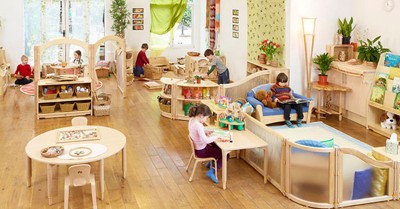
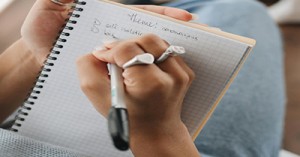

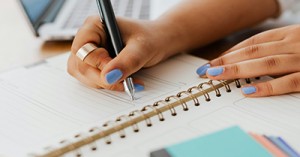

 Here is the list of the EYLF Learning Outcomes that you can use as a guide or reference for your documentation and planning. The EYLF
Here is the list of the EYLF Learning Outcomes that you can use as a guide or reference for your documentation and planning. The EYLF The EYLF is a guide which consists of Principles, Practices and 5 main Learning Outcomes along with each of their sub outcomes, based on identity,
The EYLF is a guide which consists of Principles, Practices and 5 main Learning Outcomes along with each of their sub outcomes, based on identity, This is a guide on How to Write a Learning Story. It provides information on What Is A Learning Story, Writing A Learning Story, Sample
This is a guide on How to Write a Learning Story. It provides information on What Is A Learning Story, Writing A Learning Story, Sample One of the most important types of documentation methods that educators needs to be familiar with are “observations”. Observations are crucial for all early childhood
One of the most important types of documentation methods that educators needs to be familiar with are “observations”. Observations are crucial for all early childhood To support children achieve learning outcomes from the EYLF Framework, the following list gives educators examples of how to promote children's learning in each individual
To support children achieve learning outcomes from the EYLF Framework, the following list gives educators examples of how to promote children's learning in each individual Reflective practice is learning from everyday situations and issues and concerns that arise which form part of our daily routine while working in an early
Reflective practice is learning from everyday situations and issues and concerns that arise which form part of our daily routine while working in an early Within Australia, Programming and Planning is reflected and supported by the Early Years Learning Framework. Educators within early childhood settings, use the EYLF to guide
Within Australia, Programming and Planning is reflected and supported by the Early Years Learning Framework. Educators within early childhood settings, use the EYLF to guide When observing children, it's important that we use a range of different observation methods from running records, learning stories to photographs and work samples. Using
When observing children, it's important that we use a range of different observation methods from running records, learning stories to photographs and work samples. Using This is a guide for educators on what to observe under each sub learning outcome from the EYLF Framework, when a child is engaged in
This is a guide for educators on what to observe under each sub learning outcome from the EYLF Framework, when a child is engaged in The Early Years Learning Framework describes the curriculum as “all the interactions, experiences, activities, routines and events, planned and unplanned, that occur in an environment
The Early Years Learning Framework describes the curriculum as “all the interactions, experiences, activities, routines and events, planned and unplanned, that occur in an environment